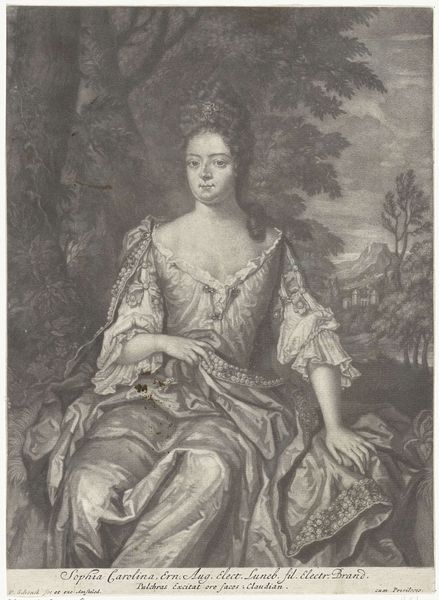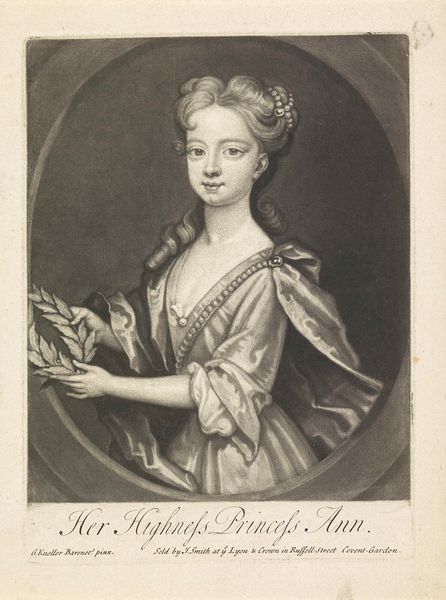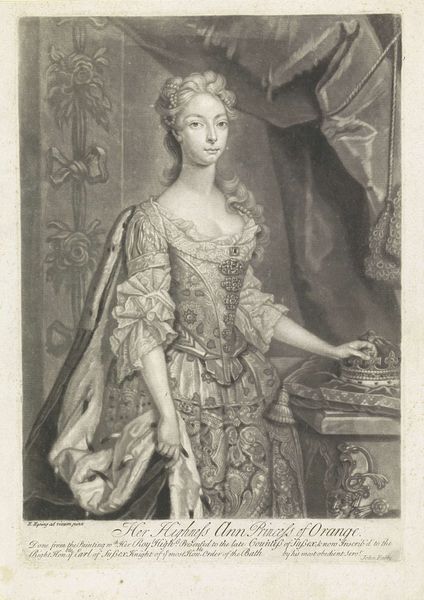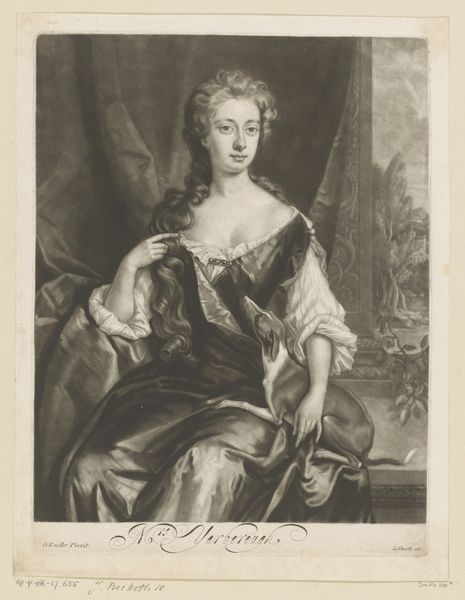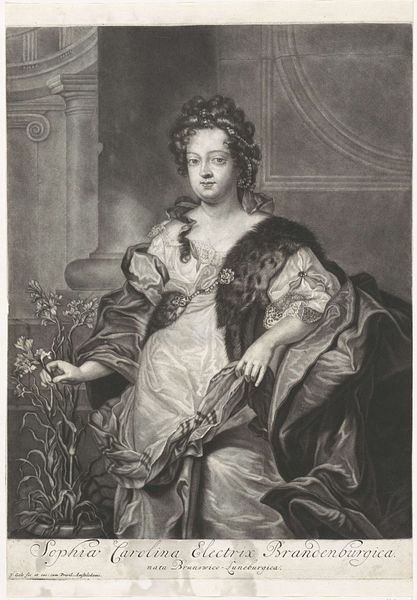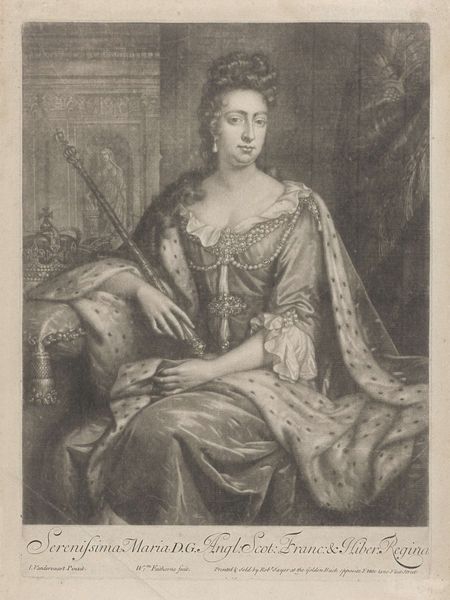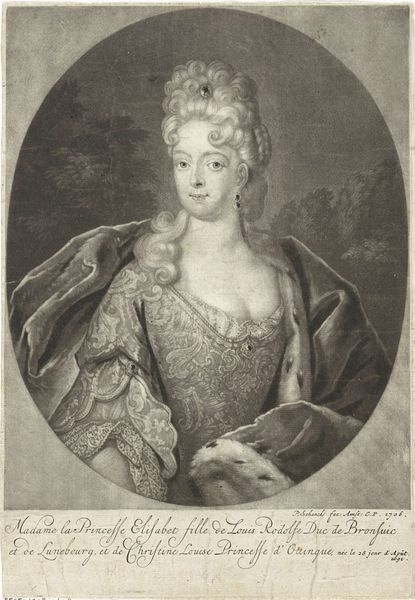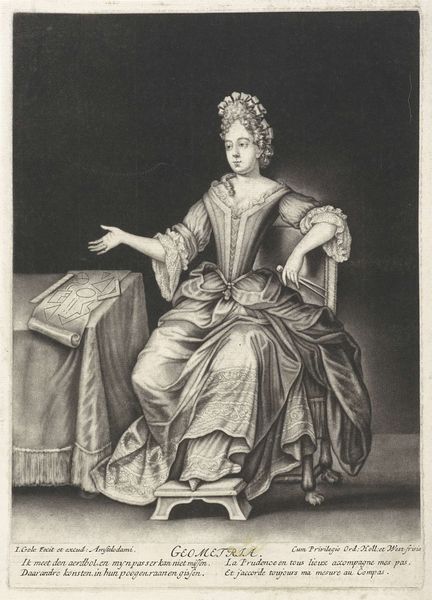
print, engraving
#
portrait
#
baroque
# print
#
historical photography
#
history-painting
#
engraving
Dimensions: height 432 mm, width 285 mm
Copyright: Rijks Museum: Open Domain
Curator: Here we have a print from between 1700 and 1713 by Pieter Schenk, titled "Portret van Ebardina Sophia van Oost-Friesland," currently residing in the Rijksmuseum. It's a compelling example of baroque portraiture. Editor: There’s a cool reserve about her… like she is a very fashionable and knowing ghost, gliding in a realm of pure surface and design. The formality of the composition, the regal bearing…it’s quite potent, but something feels frozen, suspended. Curator: Considering Schenk's meticulous engraving, the texture rendered becomes part of the story. You see how the hatching and cross-hatching techniques create depth and volume in her gown, fur-lined mantle, and the theatrical drapery. Look closely at the inscriptions—this level of textual and visual labor suggests a culture invested in very careful representation. Editor: Absolutely! It's loaded with symbolic markers, isn't it? The ermine-lined robe she holds signals her nobility, that backdrop evokes power, and even her coiffure screams aristocracy and prestige. Consider the meaning embedded in those symbols, tracing how visual language upholds and transmits dynastic power, shaping her persona within the culture's grand narrative. It speaks of controlled self-presentation. Curator: We might also discuss how such images operated within networks of production and consumption. Prints like this served to disseminate images of power. Think about the cost of the materials, the time spent engraving, the distribution networks, the very notion of circulation, the culture required. These weren’t just artistic creations; they were carefully manufactured statements of authority. Editor: Indeed. What a network of meanings embedded here. Consider how all of it constructs not only the sitter’s identity but also perpetuates her historical significance for centuries to come. Curator: Considering this, observing Schenk’s technical skill alongside the broader social function makes it, in a way, the production itself. Editor: Looking into this image together allows us to peek into not only a moment frozen in time, but into an enduring cultural imprint, echoing through visual languages.
Comments
No comments
Be the first to comment and join the conversation on the ultimate creative platform.
